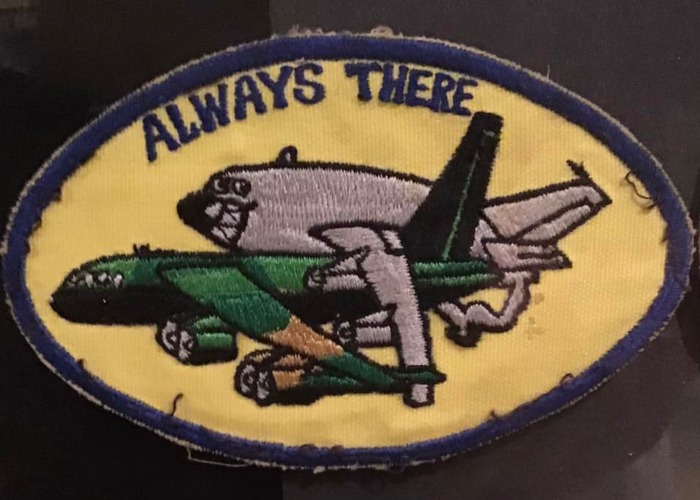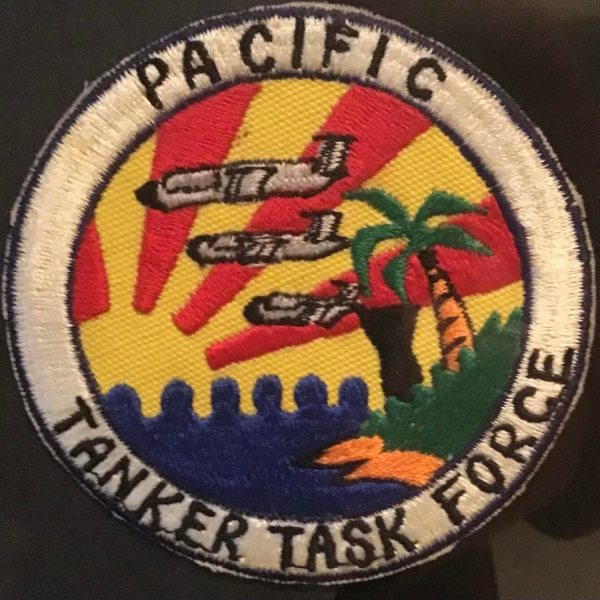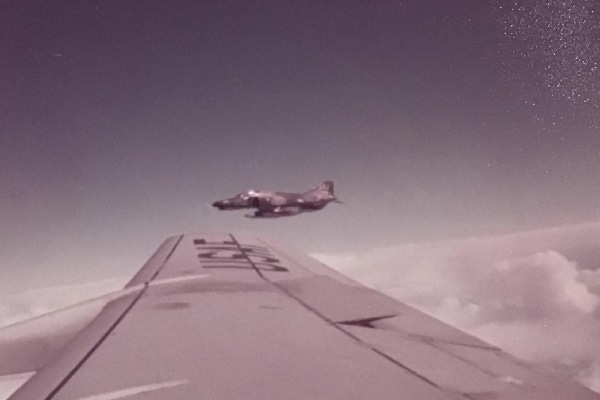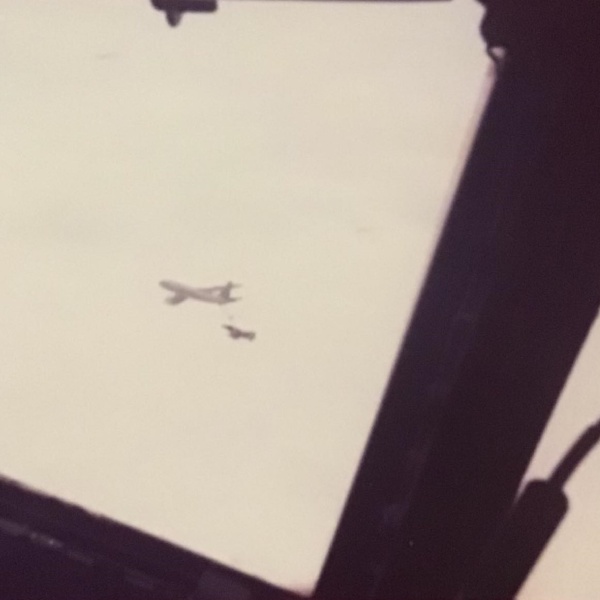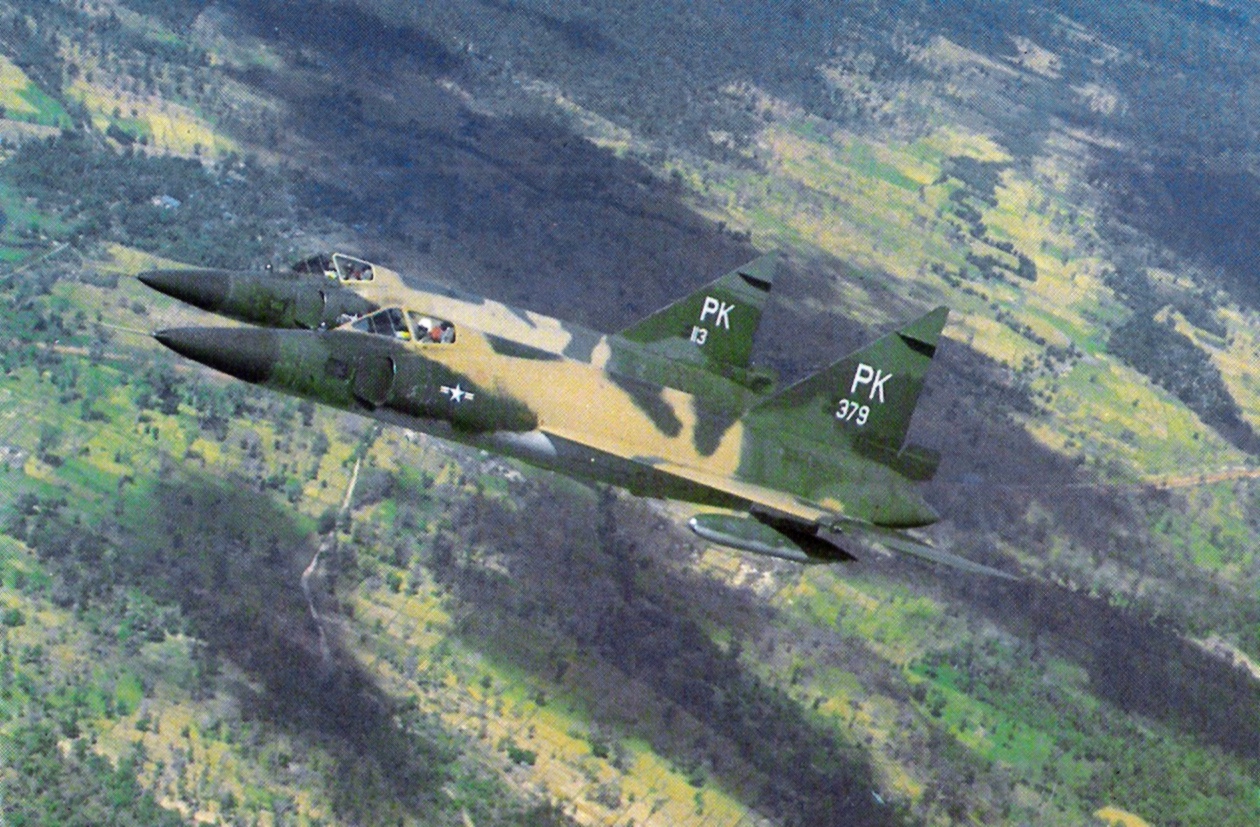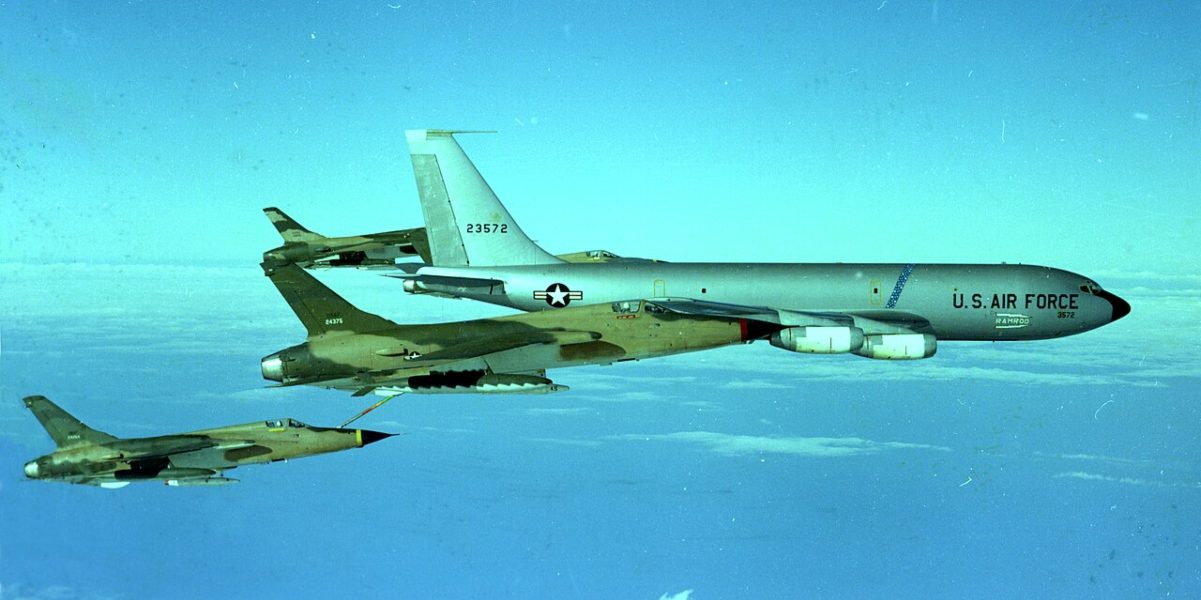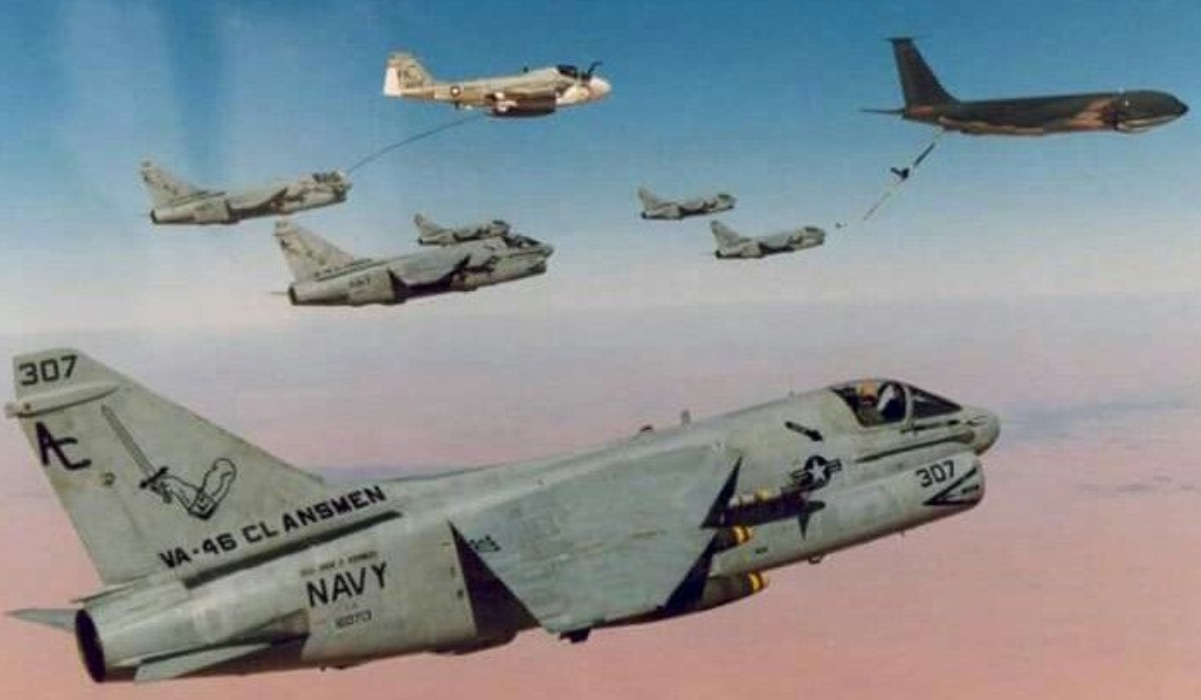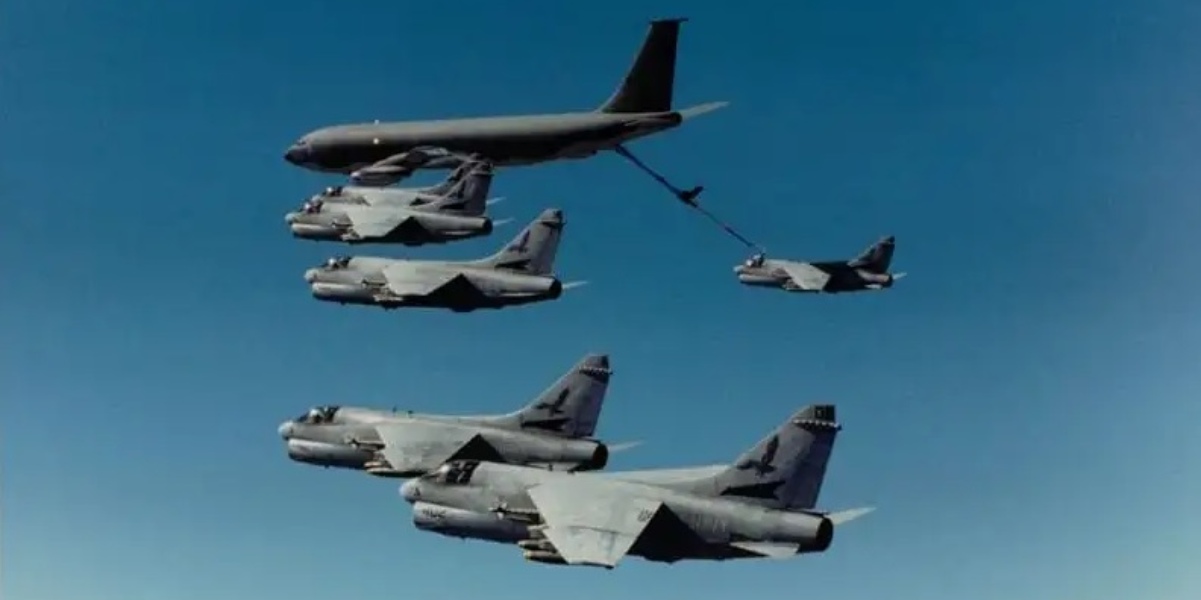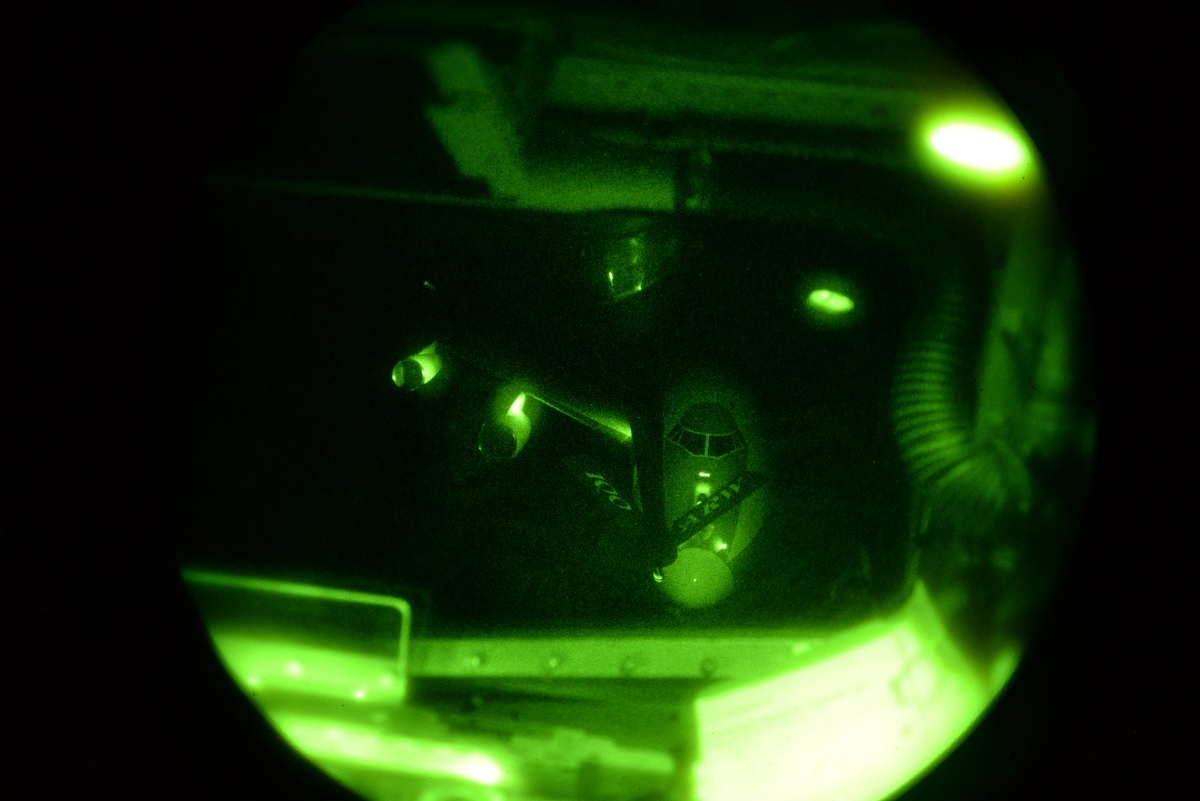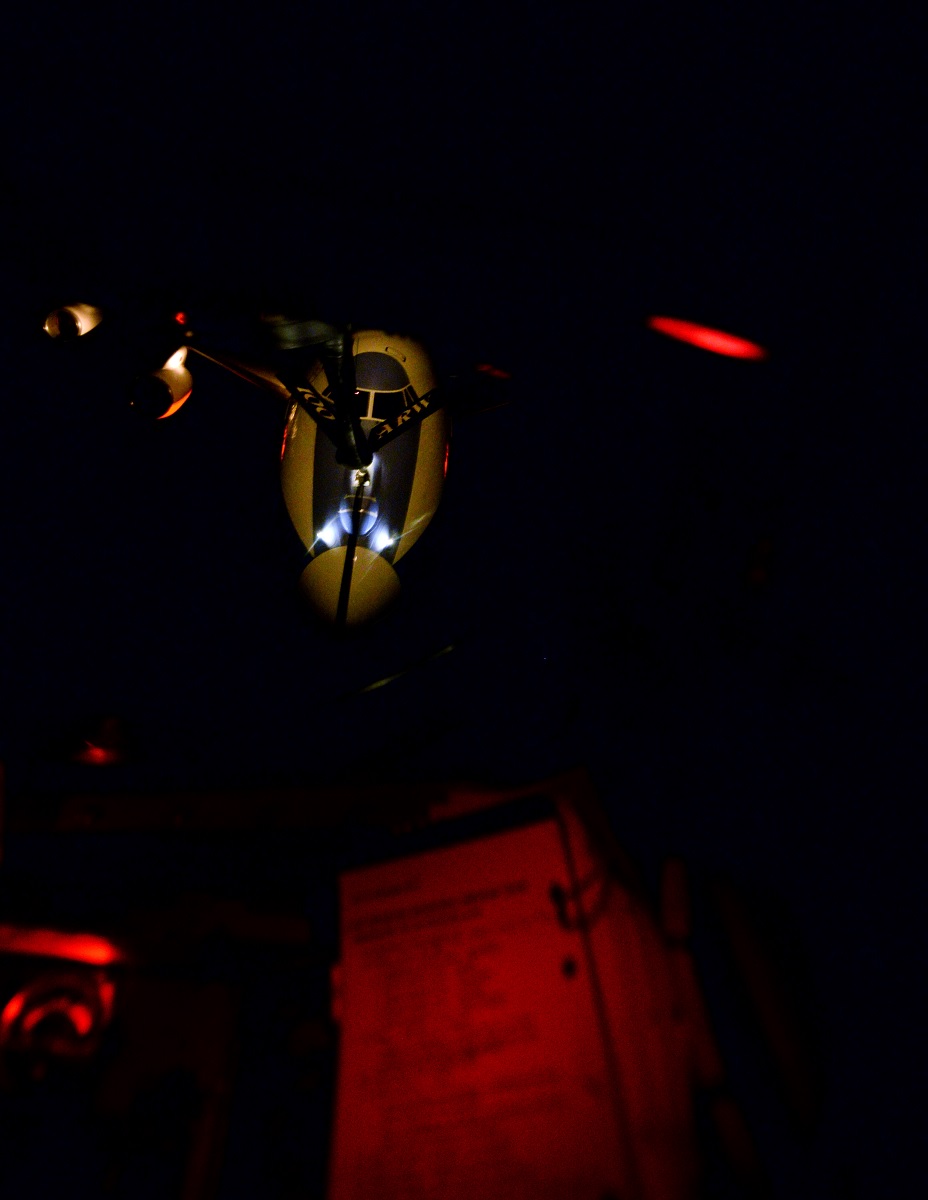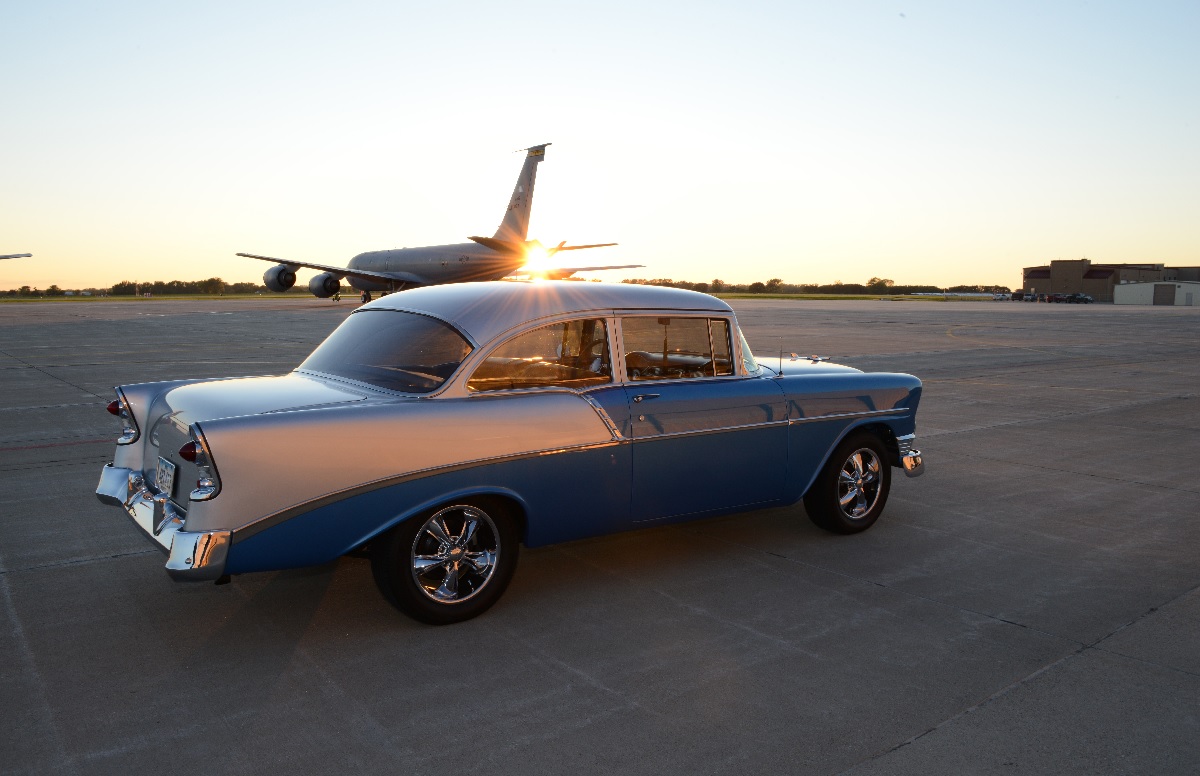‘“Where are you, Hey Joe?”
‘“On your nose for three miles.”
‘Peering up through the eyebrow windows, two Tomcats roll inverted on their backs and pull as hard as they can toward the boom,’ says Mark Hasara, former KC-135 Pilot.
The following story is taken from Mark Hasara’s book Tanker Pilot: Lessons from the Cockpit. For twenty-four years, Mark Hasara operated one of the Air Force’s oldest airplanes, the Boeing KC-135 Stratotanker. He began his career with the nuclear deterrent mission of Strategic Air Command during the Reagan Administration. He performed missions throughout Southeast Asia and the Pacific Rim after moving to Okinawa, Japan, in August 1990. Desert Storm and Desert Shield were his first combat missions. He planned and ran 500 airlift and air refueling operations per month while serving as a Duty Officer in the Tanker Airlift Control Center.
Haze Grey and Underway
0900 Saturday, 15 December 1990
King Faisal Naval Base
Jeddah, Kingdom of Saudi Arabia
“Spend a lot of time talking to customers face to face. You’d be amazed how many companies don’t listen to their customers.”
American Businessman and Reform Party presidential candidate Ross Perot
“You can talk about teamwork on a baseball team, but I’ll tell you, it takes teamwork when you have 2,900 men stationed on the U.S.S. Alabama in the South Pacific.”
Major League Baseball pitcher and Navy Chief Petty OfficernBob Feller
Jeddah’s leadership needed volunteers to work on the air campaign plan. Lt. Col. Bruce from Warner Robins led the Mission Planning Cell or MPC. Lt. Col. Wright, callsign D-Right, worked for Lt. Col. Bruce and needed help on A Model tanker plans. I jumped at the chance. Working in the MPC and getting to fly is the best of both worlds and a great chance to learn. Lt Col Bruce put my name on the list to check out “The Bag,” a wide black leather briefcase containing all of Jeddah’s first air tasking order missions in the first three days of the war. Only thirteen names are on The Bag’s cleared list. Lt. Col. Bruce took me into a room and read me into Operations Plan 1002, the war in Iraq. He detailed the events in the air campaign’s first three days. I read over each day’s ATO package summaries. Jeddah tankers fly over 130 missions on the first day.
One of the 1709th’s biggest customers is Carrier Group Two in the Red Sea, commanded by Admiral Riley Mixon. Admiral Mixon’s flagship is USS John F. Kennedy, or “Big John” to those aboard. Kennedy’s Battlegroup contained several other ships such as AEGIS Cruisers and Destroyers to defend the Battlegroup and tankers too. Carrier Airwing Three is on Big John, USS Saratoga, and Carrier Airwing Seventeen rounding out Admiral Mixon’s Airwing strike force. Each week Jeddah MPC folks flew out to USS John F Kennedy working with Airwing Three strike planners on the first three day’s strike packages. D-Right came down the hall after one of our flights and asked if I wanted to go out to the carrier. Of course, I wanted to, another great opportunity to learn. SAC’s tanker community knew very little about how the Carrier Airwings operated. Saturday morning 15 December D-Right and I donned Mickey Mouse ears and float coats for the ride out. A Loadmaster or just “Load” briefed us on safety issues before walking us to a waiting Grumman C-2 COD, wings folded, engines running at King Faisal Naval Air Station on the Red Sea coast.
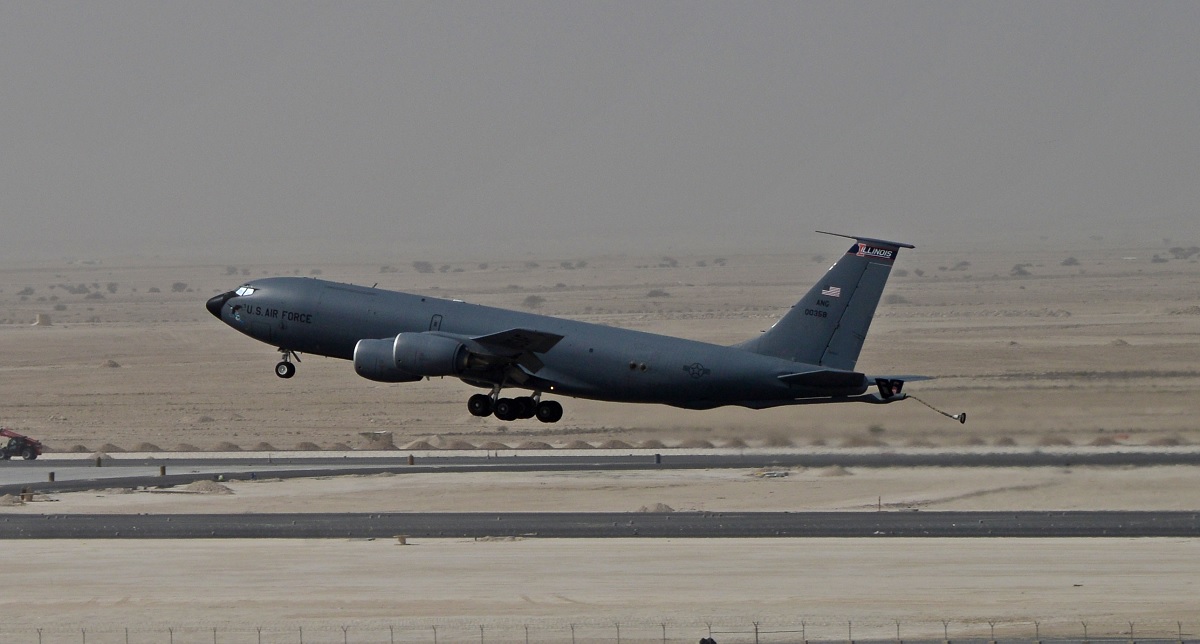
Stepping on the open rear ramp, D-Right and I walked to our seats for a long flight to Kennedy, haze gray and underway in the northern Red Sea. I sat in a window seat on the left side, right behind all the cargo on the COD’s rear deck. D-Right sat in the aisle across from me. RAWHIDE 45 taxied out to the runway ramp down until just before takeoff. After a short takeoff roll, the Hijaz Mountains passed out the window. The Red Sea is a bright turquoise blue from 18,000 feet. An hour into the flight our Load came over the intercom telling us what to do during the arrested landing; sit tight, feet, and knees together, cross your arms, and hold shoulder straps with your head down, chin on your chest. And then the Load gave this ominous warning, if we go down in the water, remember bubbles always float up. If we go down in the water, remember bubbles always float up. Follow the bubbles to a hatch and let the float coat take to the surface. Take steady breaths from the oxygen bottle. Remember to release air from your lungs as you rise. How long does it take to rise to the surface from the Red Sea’s 6000-foot trench?
Looking over at D-Right as the C-2 started descending toward Kennedy’s traffic pattern, I asked what was about to happen.
“D-Right, what’s an arrested landing and cat shot like?”
“Like nothing you’ve ever experienced in your life, not even at Disneyland!”
Leveling off and accelerating eight hundred feet above the water, the Loadmaster said to get in position over the intercom. Wings rolled left to a 3g break into the carrier traffic pattern, and the deck filled with planes passed beneath us out D-Right’s window. Slowing down, I heard the gear come down, and then flap extension tubes activate. After completing another wide left turn, the Loadmaster screamed from his seat,
“GET READY! GET READY! GET READY!”
BignJohn’s wake appeared under my window, then the gray deck and fantail. Incan only describes the arrested landing as SCREECH – BANG – HALT. Tires screeched hitting the deck as wheel struts bottomed out and the airplane came to a halt in the time it took you to read this.
The COD’s wings folded covering my window as we taxied out of the arresting cable wires. The cargo ramp opened, and the bow’s covered with A-6 Intruder and A-7 Corsair attack planes. A KA-6D tanker followed behind us. As the COD turned butt end toward the Conning Tower Island, a big white 67 appeared behind us. Pushing back into the parking spot, several people with different colored shirts waited to transfer cargo, passengers, and baggage. D-Right leaned over and asked,
“Well… how’d you like that?”
“That was outstanding!”
With a big smile, “Wait till the cat shot!”
Carrier launch operations are the most destructive sounds a human ear can experience, 140 decibels and in some cases higher. Ten decibels higher and eardrums rupture without protection. King Faisal’s Air Transportation Office told us to use foamy earplugs under Mickey Mouse cranial head protectors and now I knew why. Carrier decks are incredibly loud. Smells of burning jet fuel and greasy oil filled my nose. It smelled like being in a car repair shop with AC/DC turned all the way up. D-Right and I stood next to the COD’s folded wings as a kneeling F-14 Tomcat’s launch bar dropped over catapult number four’s shuttle on the waist. A young kid waved at several people and ran out from under the nose as the launch bar contacted a big catapult shuttle. An A-7E attack plane taxied by blocking our view momentarily. The VF-14 Tophatter Tomcat callsign CAMELOT 110 went into afterburner straining against the holdback bar. A Green Shirt gave the thumbs-up signal, and the Yellow Shirted shooter tapped the deck and pointed forward. CAMELOT 110 blasted off the end of the deck and out of view.
The Jet Blast Deflector – “JBD” to all on the carrier – came down, and KA-6D wings unfold while taxiing over the catapult track. Another A-7E, CLANSMEN 307, taxied by wings folded with a single AGM-88 HARM missile hanging from a pylon. Men in yellow, green, red, brown, and white long-sleeve shirts ran all over the deck. Two young sailors in purple shirts walked around the E-2 Hawkeye next to us and went downstairs. The Air Bossnshouted over the loudspeaker at a sailor not paying attention. Everyone stood behind a red and yellow striped line as the Sunday Puncher KA-6D went under tension and spooled up his engines to max power. A few seconds later he disappeared out of view behind the COD. It was chaos under controlled conditions.
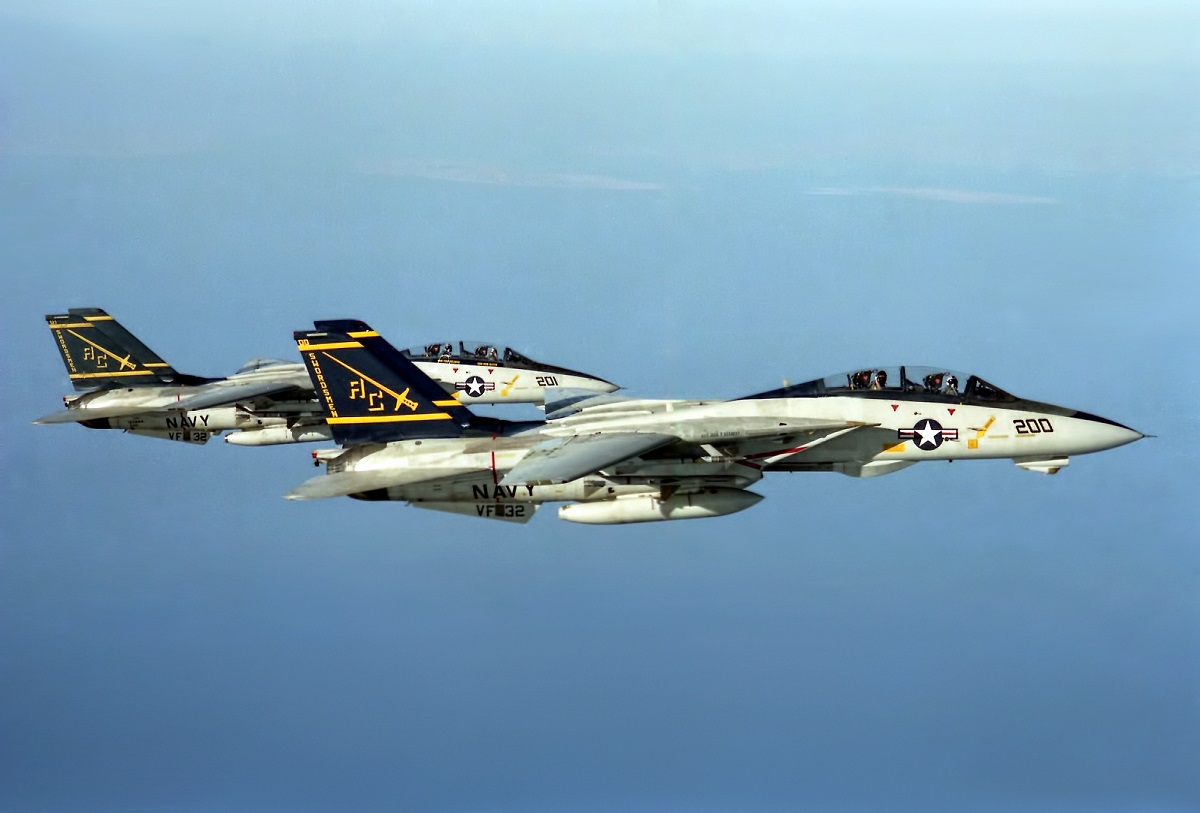
Escorts tapped us on the shoulder and led us toward the Island. Stepping off the flight deck to a small stairway, the Red Sea passed eight stories below us under catwalks made from heavy wire mesh welded to the framework. Walking into the carrier’s ATO office D-Right shook hands with Dagwood, CarriernAirwing Three Lead Strike Planner, and our host. Dagwood leads us through several passageways to the Carrier Intelligence Center or CVIC. About the size of your living and dining room combined, CVIC would be our workspace for the next few hours. CVIC holds most of the strike planning data and intelligence support systems, making it the natural place for large, multi-squadron planning meetings. All CAG Three Squadron Commanders gathered in CVIC with us.
An Intel analyst briefed us on Iraq’s air defenses from a report published by the Office of Naval Intelligence Strike Projection Evaluation and Anti-Air Research or SPEAR Division in Suitland, Maryland. I had never seen a detailed analysis of Saddam’s air defense network like this report contained. The Black Hole had just published new strike package priorities to the first three days air tasking order and all the Navy refueling requirements changed. After going over the new air wing taskings, it was our turn to ask some questions. One question D-Right had for the Commanders was what does the 1709th need to improve in our support. No one likes our Iron Maiden, the nickname for the KC-135 refueling Drogue. It’s hard and weighs over two hundred fifty pounds. Several new Airwing Lieutenants had never refueled behind a KC-135 or KC-10 until operating in the Red Sea. All of the comments were small things Jeddah’s tanker aircrews needed to fine-tune, small things easily adjusted in our procedures with Navy receivers. We spent the next two hours going over all of the strike missions in detail, changing tanker requirements where needed, and having an incredible learning experience with our customers.
After our meetings, D-Right and I had some time off. Dagwood introduced me to my escort, a Tomcat RIO named Dave Parsons, callsign Hey Joe. Both of us had a passion for photography. Hey, Joe took his camera on every flight with a great view from his Tomcat’s backseat office. He showed me several of his recent pictures the carrier Photoshop had blown up for him. He asked if I was hungry. You bet I am. He told me I have not experienced carrier life until consuming a slider, a roller, and some auto dawg. I thought what kind of Air Force initiation this and was it specific to KC-135 pilots, payback for the Iron Maiden. We headed down to the Dirty Shirt Mess, an area all can eat while working in their dirty duds.n I stuck to him like white on rice because I would never find the way back to my stateroom. A dirty Shirt Mess is at the front of the carrier. Following Hey Joe’s lead, I grabbed a tray off the stack. He pointed to a cook flipping thirty-burger patties on a grill.
“Thosenare sliders, hamburgers.”
Pointing down the line, “Those are roller,” pointing at sixty hot dogs turning on a hot dog roller.
Pointing to the Ice Cream machine, “That’s Auto Dawg… ice cream.”
“Why do you call it Auto Dawg?”
He laughed and said, “Because it looks like a dog with diarrhea as it comes out!”
Dirty Shirt Mess salad bar had more items on it than my cafeteria onshore at Jeddah. I asked Hey Joe how they got all the lettuce. He told me it comes aboard while they are underway replenishing or UNREP’ing from a stores ship that comes alongside. What that was I did not know and didn’t want to look stupid. Both of us sat down at the VF-32 Swordsmen table. Hey Joe introduced me to his squadron mates telling them I’m a KC-135 pilot at Jeddah. One bowed to me saying,
“WE LOVE TANKER GUYS!”
I asked all of them to tell me what we are doing wrong in Jeddah, and how can we improve our service to you guys. Each one mentioned their distaste for the KC-135 Iron Maiden over the soft nerf-like Drogues the KC-10 has. SAC was not going to fix that before the war. Lock the Boom when we refuel off the Drogue. There is no “lock” on the Boom. Sundance said let us plug into it, don’t help us. Most asked KC-135 mission planning questions; how much gas do you hold, what is a KC-135 fuel burn rate, and do you burn the same gas you are offloading. The discussion lasted an hour.
After finishing dinner, I asked Hey Joe to take me to some of the best places for taking pictures. I had twenty rolls of film in my helmet bag I wanted to shoot before leaving. Walking toward the center of the ship we climbed several sets of stairs. Stepping through a large hatch onto an Island balcony, the deck spread out below me three stories down. We are standing on Vulture’s Row. Hey Joe told me this is the best and safest place to take pictures if you have never been aboard. A lot of people come to Vulture’s Row to watch and photograph flight ops. Vulture’s Row was the ideal spot for me. I could see the entire flight deck fore and aft from VulturesnRow. I shot five rolls of film over the next ten minutes. There is one other place to get great pictures from. Stopping by the Swordsmen Ready Room, Hey Joe handed me a cranial and float coat. We followed VF-32’s Landing Signal Officer out to the deck just a short walk from their Ready Room. Two Tomcats came over the carrier at five hundred knots into the pattern break. We stood abeam the deck’s landing area. Each Tomcat landed thirty feet right in front of me. An A-6E Intruder followed by two A-7s came down the right side and into the overhead break pattern. I stood there mesmerized by what went on in front of me. After all the aircraft landed everyone cleared off the platform and went back to their Ready Rooms.
D-Right and I met with Strike Plans to tie off a few more items the next morning. Dagwood walked us to the ATO Office for our departure back to Jeddah. Donning Mickey Mouse ears and a float coat, the Load gave us another safety brief. The COD is backed into the same spot, waiting for us to board. The first thing I noticed are all seats are facing aft. D-Right shook Dagwood’s hand and we stepped into the COD and sat down.





